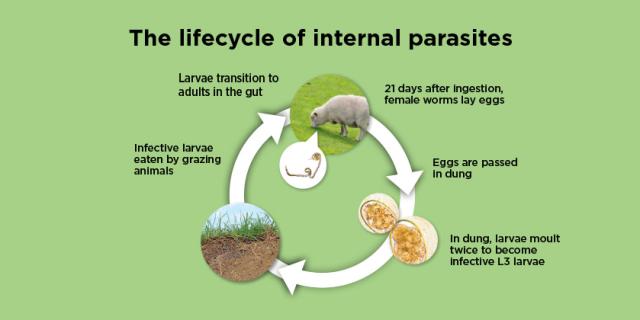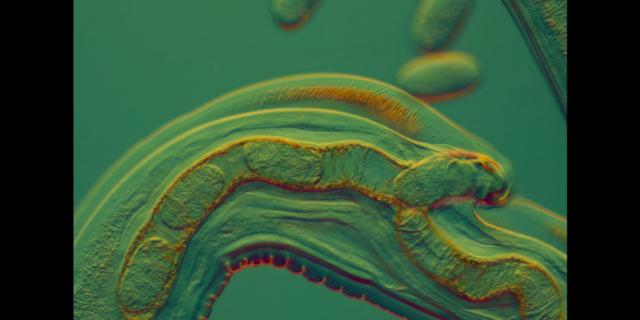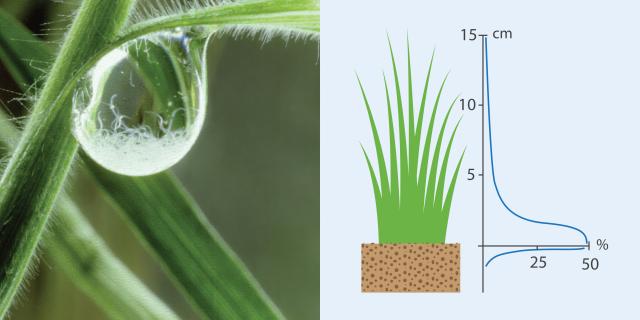The more you know about how worms live and breed, the easier it is to mitigate the harm they cause. Here we look at the stages of the worm life cycle – there are ways our management can interrupt this cycle to reduce worm challenge to susceptible stock.

- Animals eat worm larvae with pasture.
- Larvae like to live close to the base of the pasture, in moisture and away from sunlight.
- After a larva is eaten, its takes about 21 days to become an adult worm that can lay eggs and continue the cycle.
- Egg hatching and larval development on pasture go quickest in warm, wet conditions.
Know your foe
From a mouthful of larvae to egg-laying adults
- Adult roundworms live inside the gut of your sheep and cattle.
- They enter as L3 larvae, mature through a final larval stage (L4), become adults and get mating.
- Females can lay their first eggs after about 21 days inside the gut.
- Worms inside young, non-immune animals produce more eggs, with a higher development rate, than worms inside healthy adult animals.

Female Cooperia oncophora releasing eggs: Photo C. Sauermann
From eggs in poo to the next round of larvae
- The time from when eggs are laid by the female worm, to when they pass out in dung, can be as long as a few days. The majority will pass out within 24–48 hours.
- Poo is a good egg incubator – providing moisture and warmth.
- Eggs also require oxygen to hatch. Conditions that quickly break up dung pats, exposing eggs to the air (as well as warmth and moisture) can increase the rate of egg hatching and development.
- In ideal conditions, it takes just seven days for eggs to hatch, grow through two juvenile stages in the poo, and become L3 larvae capable of re-infecting stock.
Ideal conditions for larval development
- Moisture is a must.
- The right amount of warmth (20–25C).
- If it gets too hot and dry, eggs and developing larvae die.
- In the cold, the process slows down to as long as 10 weeks.

L3 – the infective stage
- Heavy dew and rain release L3 larvae from their poo incubator onto your pasture.
- Warmth and moisture encourage them to climb up blades of grass, bringing them closer to your animals’ mouths.
- You’ll find most L3 larvae in the first 2.5 cm of pasture (sheep pasture).
- Another good rule is ‘in the bottom 1/3rd of the sward’, for cattle pasture or other forage types.
- Some larvae can also survive in the first 1–2 cm of soil – this provides a ‘reservoir’ of larvae that emerge to challenge stock when rain arrives after a drought. Listen to this podcast on Autumn animal health to learn more.
- L3 are hardy, and spend anywhere from 2 to 8 months hanging out in water droplets on pasture
- Hot dry weather kills them sooner; cool moist conditions help them survive.
- Eaten with pasture, L3’s go through one more brief growth stage inside the gut of your animal before becoming adults, whereupon the cycle starts again.
Different worms like different conditions
The larvae of some worm species such as Trichostrongylus can survive frost conditions, others such as Haemonchus (Barber’s Pole Worm) are destroyed by frosts.
On the other hand, Barber's Pole worm thrives in the heat.